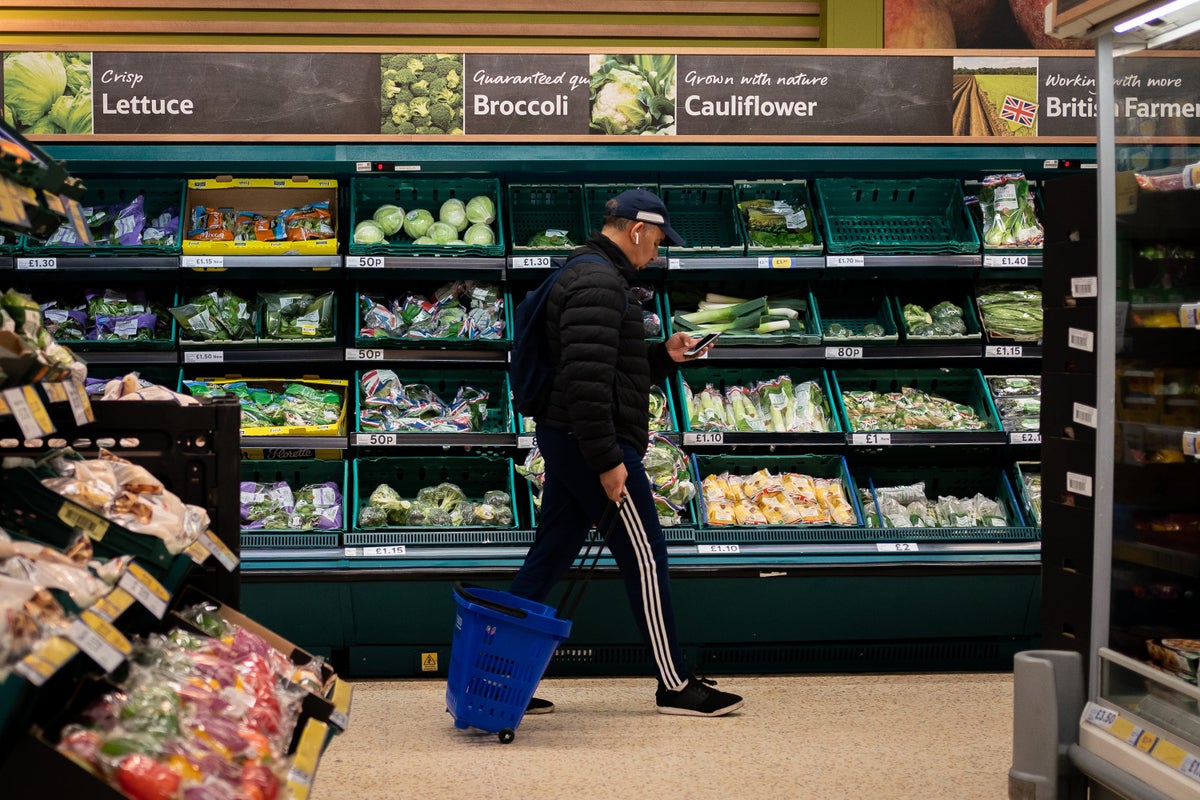
Grocery inflation has fallen slightly for a second consecutive month but prices remain 4.9% higher than a year ago, according to new figures.
The statistic is an easing from last month’s 5%, which was down from July’s 5.2%, but it continues to place significant pressure on household budgets, market research firm Worldpanel by Numerator, which was recently renamed from Kantar, said.
Fraser McKevitt, head of retail and consumer insight at Worldpanel, said: “Prices might not be climbing quite as quickly, but they’re still on the rise and the battle between own-label lines and brands continues as household finances remain tight.”
Supermarket own lines make up 51.2% of all sales, up from 50.9% a year ago, as shoppers seek out cheaper alternatives.
Sales of these products grew by 5.9% this period, just ahead of brands at 5.3%, with sales of premium own-label goods rising by 10.3%.
However, brands are “holding ground” in some categories, including toothbrushes, frozen chicken and baby toiletries.
As students returned to school, sales of lunchbox staples shot up compared to the previous fortnight, with spending on yogurt rising by 26%, sliced cooked meats by 17% and cheddar cheese by 24%.
While sandwiches remain popular, featuring in more than half of children’s lunchboxes, they are disappearing from some school bags as options like cooked poultry take their place, Worldpanel said.
While overall school uniform sales dipped slightly over the summer, grocery retailers grew ahead of the market at 8.4%.
Mr McKevitt said: “The grocers clearly did their homework on back-to-school fashion. Value is still at the front of shoppers’ minds, and retailers have tapped into this.
“Average prices have fallen, and buyers have increased their basket sizes as they aim to make the most of the discounts on the table.”
Worldpanel data shows that families are also turning to the second-hand market in search of deals, with 13.1% of schoolwear shoppers buying it pre-worn.
Tesco’s share of the market reached 28.4% over the 12 weeks to September 7, up 0.8 percentage points compared to a year ago. Britain’s largest grocer saw growth across all channels, with spending up 7.7% – its highest rate since December 2023.
Ocado was once again the fastest growing retailer, with sales rising by 11.9%.
Spending through the tills at Sainsbury’s increased by 5.4%, taking its portion of the market up to 15.1%.
Lidl was the fastest-growing bricks and mortar retailer with sales up 11%, increasing its share to 8.2% from 7.8% in 2024.
Fellow discounter Aldi held its 10.7% share with an increase in spending of 4.7%.
Sales of groceries at M&S were 5.9% higher than a year ago.
Elon Musk buys $1B in Tesla stock in show of commitment for flagging EV maker
Aldi issues stark warning over rising food prices
Aldi sales rise but profits fall as it plans £1.6bn investment on UK expansion
Wage growth falls to lowest since 2022 as jobs market continues to falter
Google launches £5bn AI investment in UK ahead of Trump’s visit
UK firms trading more with the US as they pivot from goods to services – HSBC







